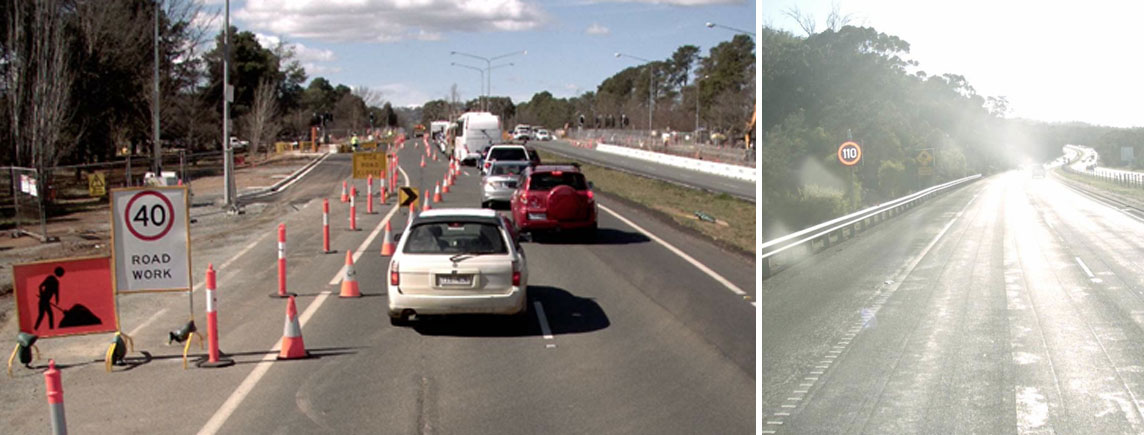Trials of Driver Assistance Systems

Multiple trials of driver assistance systems such as Lane Keeping Assist (LKA), Adaptive Cruise Control (ACC), Traffic Jam Assist (TJA) and Traffic Sign Recognition (TSR) have been undertaken on Australian roads to understand the performance of these commercially available systems and their interaction with road infrastructure.
Trials were undertaken on:
- The EastLink motorway in Melbourne
- The Monash, CityLink and Tullamarine motorways also in Melbourne
- The Sydney Orbital Network
- Most Brisbane urban motorways (AirportlinkM7, Clem7, Inner City Bypass, Legacy Way, Logan, Gateway, Centenary and Pacific Motorways).
Trials were also undertaken on a section of rural highway in Western Australia and an Austroads investigation covered a sample of roads from across Australia and New Zealand.
Start and end dates: Trials were conducted between 2016 and 2018
Included technologies
- Automated driving and driver support: driver support – continuous (and "partial" automated driving)
- Automated driving and driver support: driver support – control interventions
- Automated driving and driver support: driver support – warnings
Project stages
- Testing for specific performance
- Pre-deployment
Included locations
- Urban motorway
- Rural main highways
Benefits directly sought by the project
- Increase knowledge and experience of the technology
- Increase public support to assist deployment and adoption
Project scale
More than 20 different commercially available vehicles were used in the trials from a range of manufacturers.
Australian and New Zealand roads are already being used by commercially available vehicles fitted with driver assistance systems such as Lane Keeping Assist (LKA), Adaptive Cruise Control (ACC), Traffic Jam Assist (TJA) and Traffic Sign Recognition (TSR). There had been limited prior work to understand the real-world performance of these systems on Australian and New Zealand roads or the implications on and requirements for infrastructure quality. These trials sought to close that knowledge gap to enable infrastructure owners and operators to better prepare roads for these vehicle technologies and the benefits they may bring, such as improved safety.
Lessons learned to inform the conduct of trials
- Infrastructure owners and operators found relevant lessons learned from trialling the performance of commercially available vehicle systems, not only from the developmental technologies that are often the focus of other trial initiatives.
Lessons learned that inform future technology deployments
- There is variance in the performance of driver assistance systems between different makes and models and vehicles.
- There is a relationship between the performance of the driver assistance systems and the quality of infrastructure elements such as line marking, traffic signs and other infrastructure attributes such as pavement cracks.
- Although the performance of driver assistance systems was generally good on high quality road such as motorways, there were still situations where performance suffered. Causes were often associated with infrastructure design rather than quality, for example the layout of line marking can cause challenges even when the quality of the lines is good.
- There is merit in infrastructure design and quality standards considering the needs of the driver assistance systems.
- Individual project reports (linked below) provide information on the specific findings from each of the trial projects.
Links to project lessons learned and / or benefit assessment reports
ARRB summary report on EastLink phase one trials
EastLink trials article in Infrastructure Magazine September 2017 edition
Transurban findings from Victorian phase one trials
Transurban findings from New South Wales trials
Transurban findings from Queensland trials
Curtin-Monash Accident Research Centre report on the readiness of rural Western Australian roads
Links to any other supporting project reports
Transurban website of trials in Victoria, New South Wales and Queensland
Austroads report on implications of pavement markings for machine vision
Austroads report on implications of TSR systems for road operators
Last updated: May 2021.
